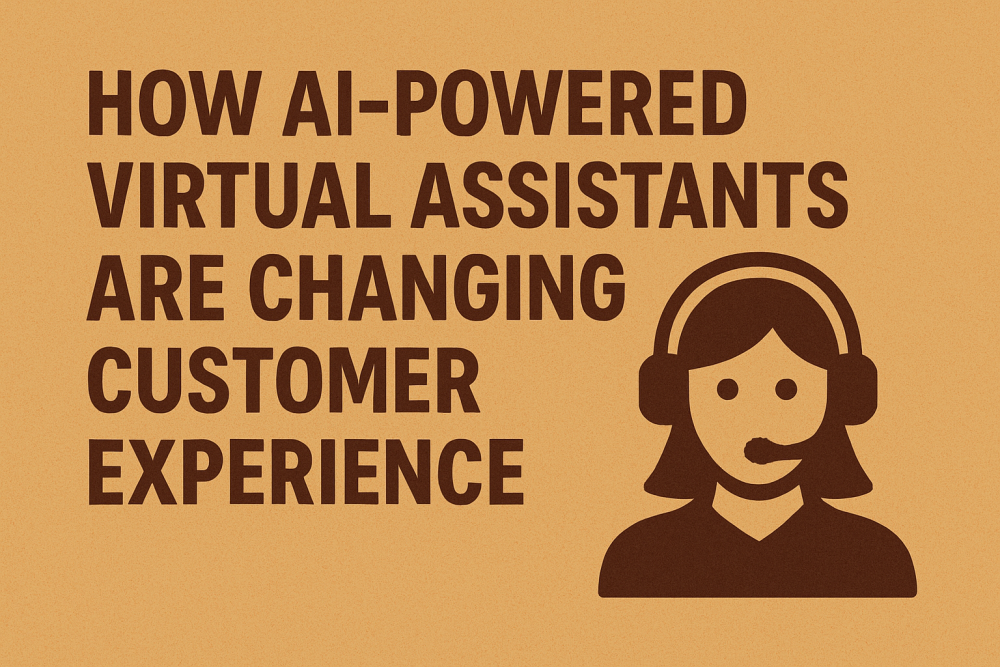Customers at present time are asking for immediacy, personalization, as well as continuous access. Service models in the were solely based on human agents, are struggling to keep up with these rising expectations, which in turn is resulting in longer wait times, frustrated customers, as well as high operational costs. The perfect solution for the above issue includes implementing AI-Powered Virtual Assistants (VAs). VAs are changing considerably, from being simple chatbots to offering efficient, personalized, as well as omnipresent customer experience.
The Evolution of Customer Interaction
AI virtual assistants showcase a considerable leap from early, rigid, rule-based chatbots. Modern virtual assistants are capable of:
- Understanding Context and Intent: By using advanced natural language processing techniques, virtual assistants are capable of evaluating not just the keywords, rather the deeper meaning as well as sentiment behind a customer’s query, whether it is through text or even voice.
- Providing Instant, 24/7 Support: Unlike human teams which are confined to business hours, virtual assistants offer round-the-clock availability, which in turn ensures that customers in any time zone or at any hour can get prompt answers to common questions as well as issue resolutions, thereby helping in considerably lowering customer frustration.
- Seamless Omnichannel Integration: Top-tier virtual assistants are capable of operating consistently across all channels, like website chat, mobile apps, social media, as well as voice assistants. A customer can simply start a conversation on one platform and then smoothly transition to another without losing any context, which in turn helps in ensuring a unified as well as frictionless journey.
For instance, companies like Amtrak have deployed virtual assistants which are capable of handling more than 5 million customer requests in a single year, in turn lowering the load on human agents as well as increasing self-service bookings.
Personalization and Proactive Service
The true power of AI virtual assistants mostly relies on their ability to offer hyper-personalization at scale. Virtual assistants are also capable of combining with Customer Relationship Management (CRM) systems and evaluating a customer’s history, purchase patterns, as well as browsing behaviors for offering following features:
- Offer Tailored Recommendations: Suggesting products or services which are specific to the requirements of customers, which in turn results in increased cross-selling as well as upselling.
- Emotional Intelligence: Modern virtual assistants use this method of analysis to find out dissatisfaction or anger in a client’s tone or text. This is an important ability which allows the virtual assistants to regulate its response, show compassion, and, most essentially, quickly route the conversation to a human agent for complicated or sensitive concerns that involve human touch.
This mixed approach, where the artificial intelligence manages the predictable and human concentrates on the complex situations, is a key. It enhanced the capabilities of human workforce, which in turn results in improved job satisfaction for agents as well as enhanced resolution rates for customers.
Operational Benefits and Future Outlook
Beyond obvious customer experience advantages, virtual assistants provide immense operational benefits. For instance, it automates between 70-80% of regular inquiries, which results in huge cost savings as well allowing companies to grow their support operations without increasing the headcount. Additionally, every communication managed by a virtual assistant creates valued data which is fed back into the system, in turn helping in enhancing the accuracy and performance of the virtual assistant.
The gen AI models are becoming more sophisticated, which in turn results in improved conversational abilities of virtual assistants. Future these assistants are going to manage even more complicated jobs. This will be done by fully incorporating into the lifestyle of customers and supervising monetary accounts or executing thorough technical troubleshooting.
Conclusion
Artificial intelligence-based Virtual Assistants are primarily restructuring customer experience by meeting the present demand for pace, personalization, as well as convenience. These tools enable companies to attain a significant balance: lowering operational costs while concurrently improving quality of service. By mastering the blend of instant automation for transactional queries and intelligent handoff for empathetic human interaction, virtual assistants are not merely an automatic tool rather they are a tactical promoter for strong loyalty of customer and sustainable growth of business.
